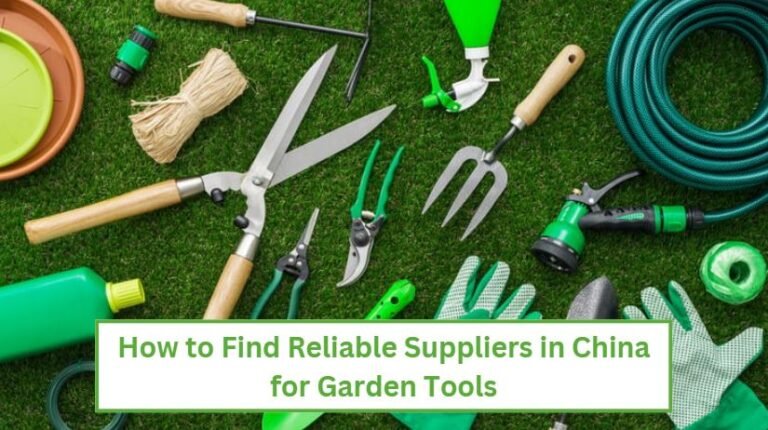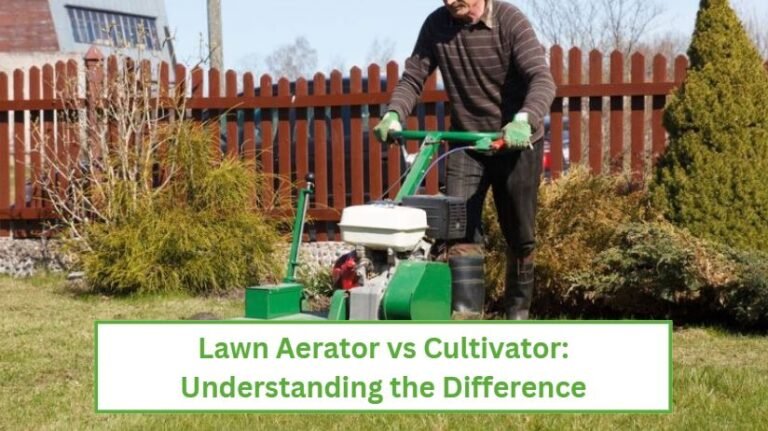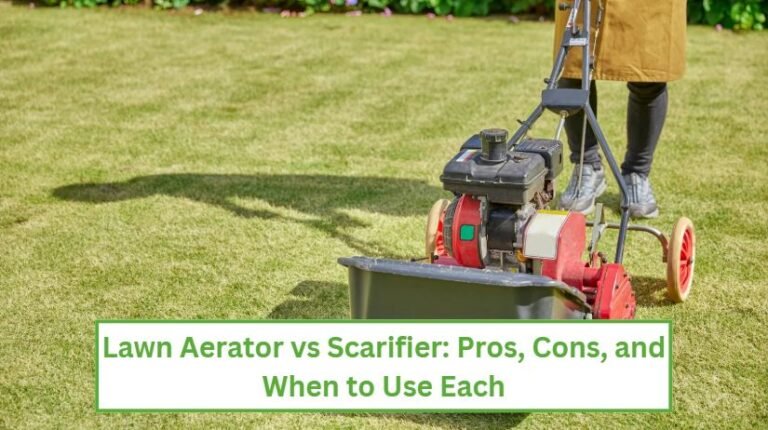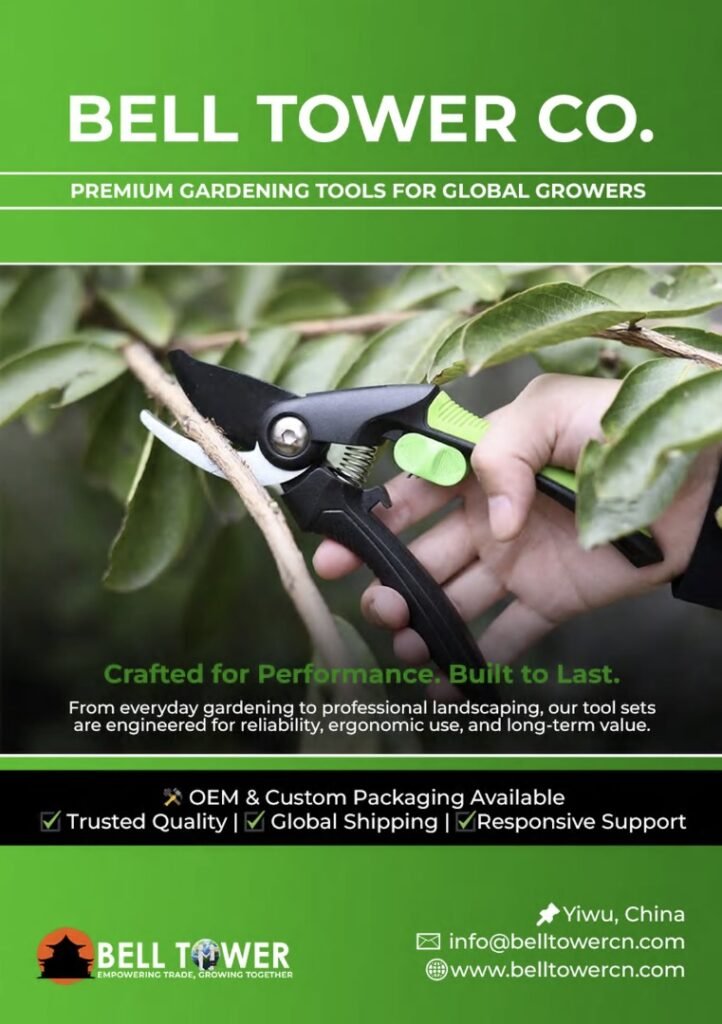A perfect lawn doesn’t just happen overnight; you water it, mow it, and fertilize it, but even then, the grass may stay tired.
Why’s that? Because real problems often lie beneath the surface, aerating and dethatching are two common methods to help your soil thrive, thereby nourishing your plants effectively.
If you’re wondering whether you need a lawn aerator, a dethatcher, or both, this guide will help clarify the situation. Let’s break everything down step by step.
What Is Lawn Aeration?
Aeration involves your soil. Over time, heavy foot traffic, heavy rain, and machinery can make it dense and hard.
And when that happens, air, water, and nutrients can’t easily reach the grassroots, leading to weak, shallow growth.
A lawn aerator digs small holes in the soil, loosening it up, and allowing roots to breathe again. There are two main types of aerators:
- Spike aerators: These use solid spikes or tines to poke holes in the ground
- Plug (Core) aerators: These pull out small plugs of soil, which is ideal for starting over a new lawn
When to aerate your lawn? If you notice that your lawn is struggling even though you water and fertilize it regularly, chances are it’s a soil compaction issue. Aeration will pave the way for new growth.
Benefits of Lawn Aeration
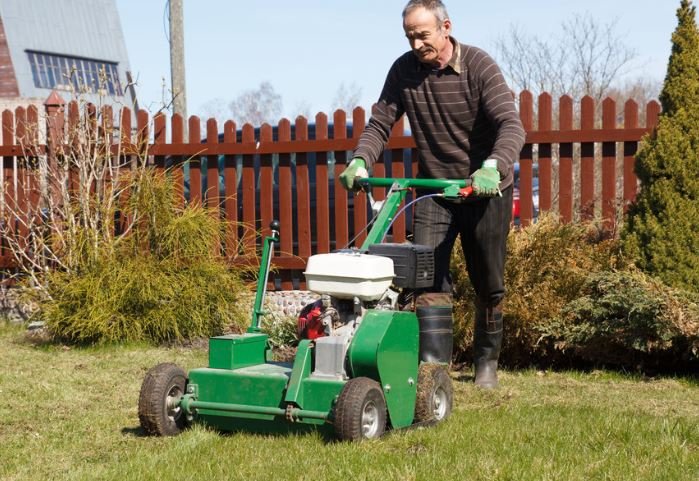
Here’s why aeration is beneficial for your lawn:
Better water absorption: Aeration offers pathways for water and nutrients to seep in and reach the roots of your soil. Instead of pooling at the top, water reaches where it’s supposed to go.
Healthier roots: When your soil gets enough oxygen and water, the roots grow deeper and stronger.
Enhanced Fertilizer Effectiveness: Nutrients can travel and reach the grassroots easily, where they’re actually useful
Think of aeration as opening the door so your grass can finally breathe and grow the way it’s meant to.
When Should You Aerate?
At what time of the year should you aerate your lawn? First, listen to your soil. Does the soil feel rock-hard? Is the grass looking thin in high-traffic areas? Water puddling is another indication that the soil is too compact.
Then, pick the right time, which can vary depending on the grass type:
- Cool-season grasses (E.g., fescue or Kentucky bluegrass): Fall or early spring
- Warm-season grasses (E.g., Bermuda or Zoysia): Late spring and early summer
Recommended Aerator from Bell Tower
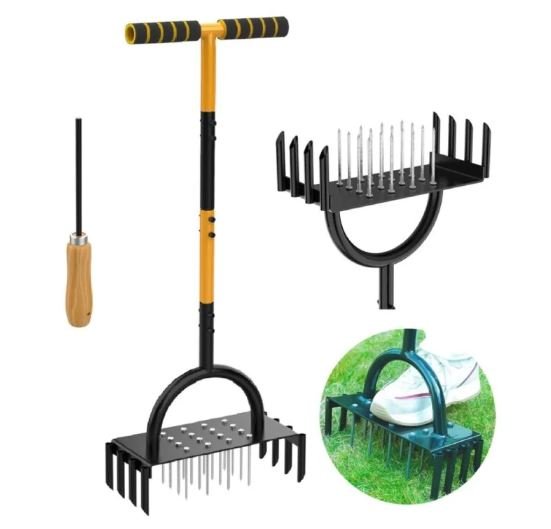
What Is Lawn Dethatching?
Dethatching deals with the surface. Thatch is a layer of dead grass, roots, and organic matter; it exists between the soil and grass blades.
A small amount of thatch acts as mulch, which is fine, but too much of it can block water, fertilizer, and oxygen from reaching the soil.
A dethatcher is a gardening tool that removes this layer, allowing your lawn to breathe again. It comes in two forms: a simple dethatching rake or a motorized dethatcher.
Benefits of Dethatching
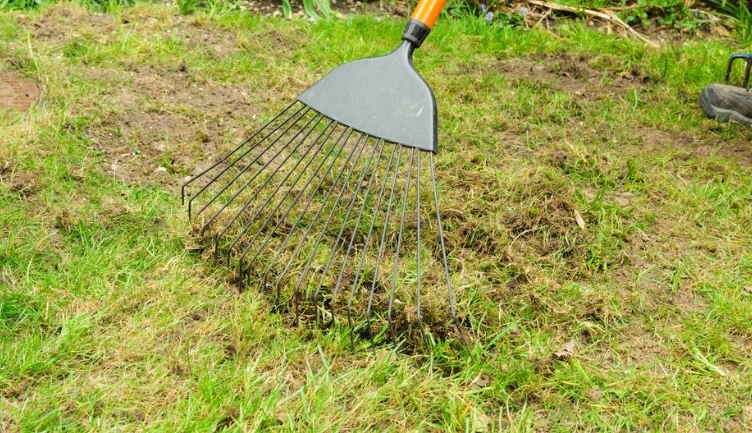
Here’s why dethatching is such a big deal in gardening:
- Prevents diseases and pests: A thick thatch layer is like a cozy home for fungi and insects
- Improves water flow: Thatch keeps water from entering the soil
- Encourages new growth: Once the barrier is gone, fresh grass roots can easily push through
When Should You Dethatch?
Dethatching isn’t something you do after a certain period or once a year. You’ll get signs when you need to do it.
- Grass feels spongy when you walk on it
- You notice water sitting on top instead of seeping in
- The lawn turns brown or patchy
Season-wise, late summer to early fall is a good time for cool-season grasses. For warm-season grasses, the right time for dethatching would be late spring through early summer.
Aerator vs Dethatcher: What’s the Difference?
Now that you understand how both work, let’s line them up side by side.
| Lawn Aeration | Lawn Dethatching |
| Fixes compacted soil | Removes the layer of organic debris (thatch) on the surface |
| Penetrates deep into the ground | Works only at the top layer of the lawn |
| Usually done once or twice a year | Only needed when thatch builds up too much |
| Improves water, air, and nutrient flow to roots | Clears blockages so water and nutrients can reach the soil |
| Best for dense, hard soil | Best for spongy lawns with excess thatch |
So aeration is the solution for soil compaction, whereas if there’s suffocation on the surface, dethatching is the way to go.
Which One Does Your Lawn Need?
Some signs tell you when you need aeration and dethatching. If you notice compacted soil that’s tough to dig into, it’s time to aerate it. Plus, thin grass in high-traffic spots and standing water after rain are a couple of other signals.
And if the thatch growth in your grass is more than half an inch, your lawn’s texture is spongy, and grass roots are trapped in thatch, it’s time for dethatching.
How to Use These Tools Effectively
Aeration Steps
- Mow your lawn short
- Water lightly the day before to soften the soil
- Run the aerator evenly across the lawn
- Leave the plugs on top; they’ll break down naturally
- Follow up with fertilizer or overseeding
Dethatching Steps
- Mow the lawn shorter than usual
- Use a dethatching rake or power dethatcher
- Rake up and remove the debris
- Water and fertilize immediately after
Common Mistakes to Avoid
- Aerating or dethatching during extreme heat or drought
- Doing it too often (once a year for aeration is plenty, dethatching only when necessary)
- Ignoring aftercare; fertilize, water, or overseed afterward
Lawn Aerator Vs. Detatcher: FAQs

How Often Should I Aerate My Lawn?
Most lawns only need aeration once a year, but high-traffic areas may benefit from twice-yearly aeration. The right frequency ensures healthy roots.
How Do I Know If My Lawn Needs Dethatching?
Dig up a small patch of turf and check the thatch layer; if it’s more than half an inch thick, it’s time to dethatch to restore healthy airflow.
Can I Aerate and Dethatch on the Same Day?
Yes, but sequence matters. It’s best ot dethatch first, then aerate. This clears the surface before you can loosen the soil and gives your grass the perfect environment for growth.
Conclusion
Your lawn’s health doesn’t depend only on how often you water, mow, or fertilize it. Aeration and dethatching are important, too; they solve specific problems that prevent your lawn from thriving.
- Aeration tackles compacted soil
- Dethatching removes surface debris
- Sometimes you’ll need one, sometimes both
The best approach? Inspect your lawn. If it feels spongy and overgrown with thatch, dethatch it first. If it feels hard and lifeless, follow up with aeration.
Read more: Aeration and Overseeding

